Smith's Adjustable Manual Knife Sharpener In-depth Review
The Smith’s Adjustable Knife Sharpener is fast and effective, but it suffers from major design flaws. Here are our test results and review.
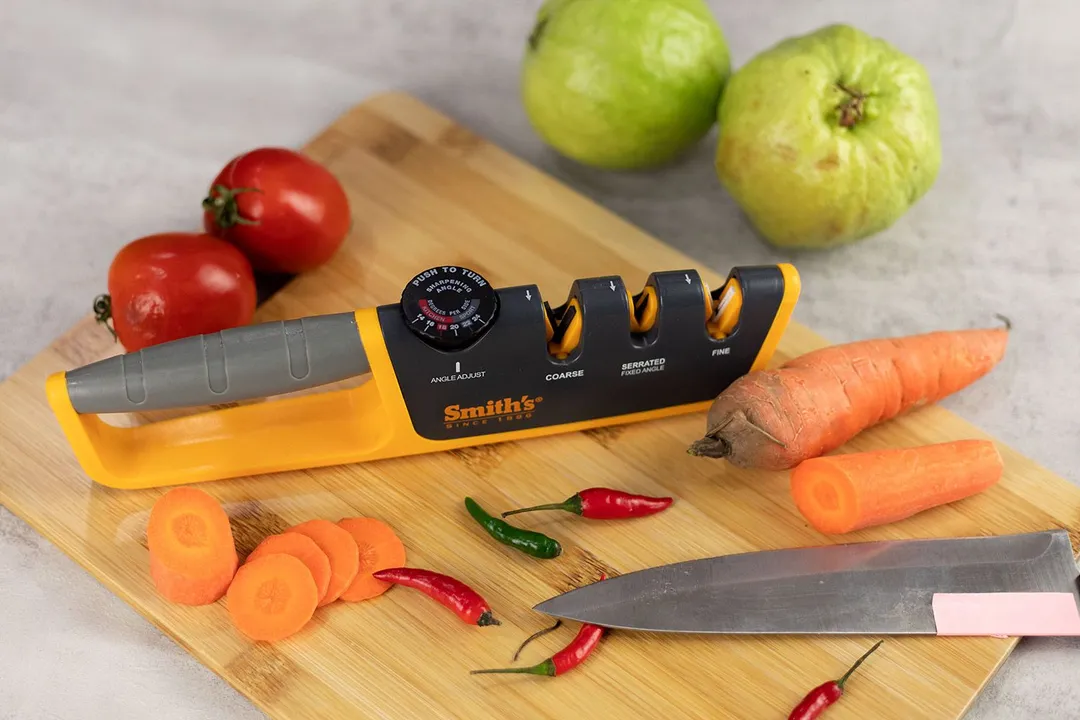
Overall Verdict
In a short time, the Smith’s Pull-Thru Adjustable managed to restore a useless knife back to sharpness with minimal effort. It also accommodates more types of knives than any other pull-through sharpeners on the market. Whether a knife needs a complete overhaul or just light honing, this sharpener can do it all.
However, your knife won’t ever be the same after sharpening. The blade will lose a considerable amount of material, and the edge will no longer be straight.
Things We Like
- Angle-adjustable sharpening
- Sharpening slot for serrated blades included
- Wide slot inserts
- Replaceable abrasives (sold separately)
Things We Don’t Like
- Shears off a considerable amount of metal
- Awkward slot structure
- Long, narrow base
The Smith’s Pull-Thru Sharpener is one of the rare manual sharpeners that allow angle adjustment. This sharpener is also quick and effective in turning a dull blade back to its original sharpness.
However, the sharpener has several minuses preventing it from getting into our top rating board. Its sharpening slots are set in an unusual order, which can be confusing for first-timers. We also have concerns about the device’s overall balance. But the most glaring issue is that it grinds away a great deal of metal.
Key Specs
Where to Buy Price at publication $27.38
*You help support HealthyKitchen101's product testing and reviews by purchasing from our retail partners.
Compared to Other Manual Knife Sharpeners
6.0 Performance
The Smith’s Pull-Thru pulled off good grades when it came to sharpening time and maximal keenness. However, it failed to replicate the same success for other aspects.
8.0 Sharpening Time to Cut a Lemon
The Smith’s Pull-Thru completed the lemon-cutting test in 85 seconds, thus easily securing its place among the fastest sharpeners. It performed consistently well in this test through our repeated attempts over the months, sometimes overriding its own record to reach the 70 seconds mark.
If immediate sharpness is all you ever need, this one won’t disappoint.
8.0 Maximum Sharpness Achieved
We had smooth, almost effortless slices with tomatoes, and the thick flesh and slippery skin on a raw chicken breast didn’t pose much of an obstacle for the knife, either. This is the same keenness level as when the knife was brand new, so we’d say the sharpener did an excellent job of reviving a knife from dead dullness.
We were able to slice through the thick and stringy fibers of a piece of beef tendon with two swipes, but it was rather forceful, so we decided to grant it an 8 in sharpness at the end.
3.0 Material Retention



Compared to other manual sharpeners in the test, this one ranked last in terms of material retention ability. As the photos indicate, it sacrificed a significant amount of material in exchange for sharpness. Over time, it can eat away at the blade, reducing the knife’s overall lifespan. You could practically whittle the knife away to nothing on this device if you want to!
4.5 Edge Smoothness
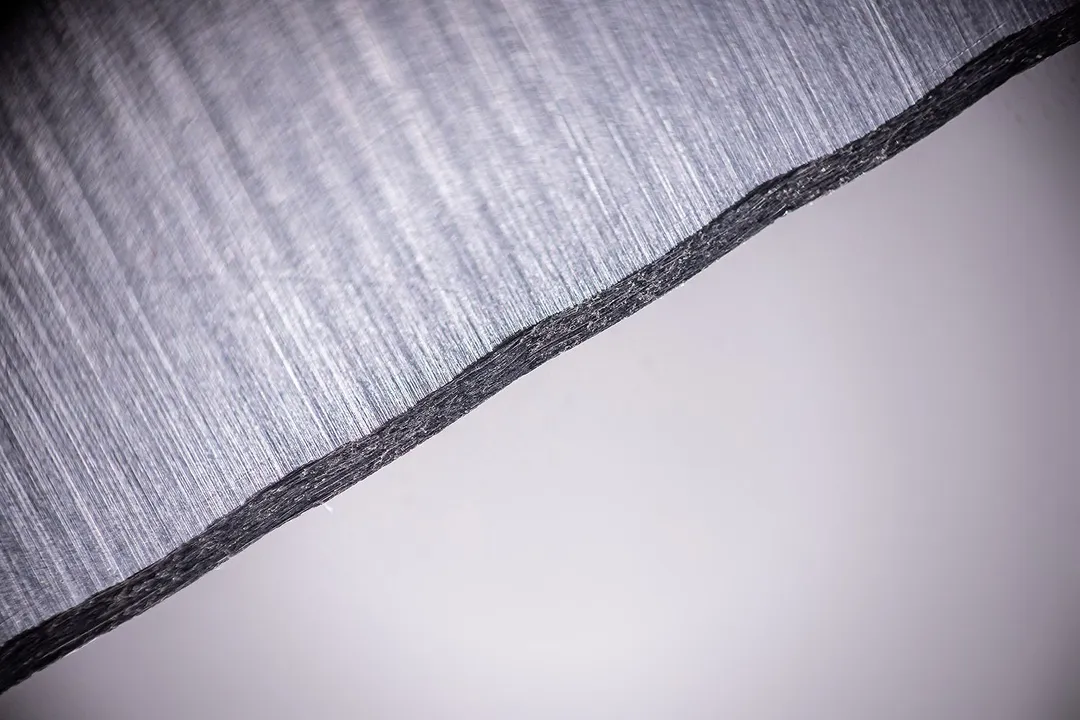
While it is true that this sharpener was quick and effective, it was at the expense of the edge’s integrity. From tip to heel and everything in between, the edge was anything but smooth once it had exited the slots.
In the process of sharpening, the abrasives took a massive toll on the knife’s edge and rendered it deformed.
7.8 Design
The Smith’s Pull Thru sharpener is made with decent materials and enjoys a nice fit and finish. Unfortunately, it suffers from poor design, in particular an elevated working section and a long and narrow base.
In the Box

- 1x sharpener
- 1 x instruction manual
Rather than a cardboard box, the Smith’s Pull-Thru came delivered in a plastic blister pack molded after its outline. The package wouldn’t pop open, so we had to cut it with a pair of scissors to retrieve the contents inside.
A user’s guide is included with the package and contains plenty of useful information that you may need to know before using this sharpener. An online version is also available on the official website.
Dimensions
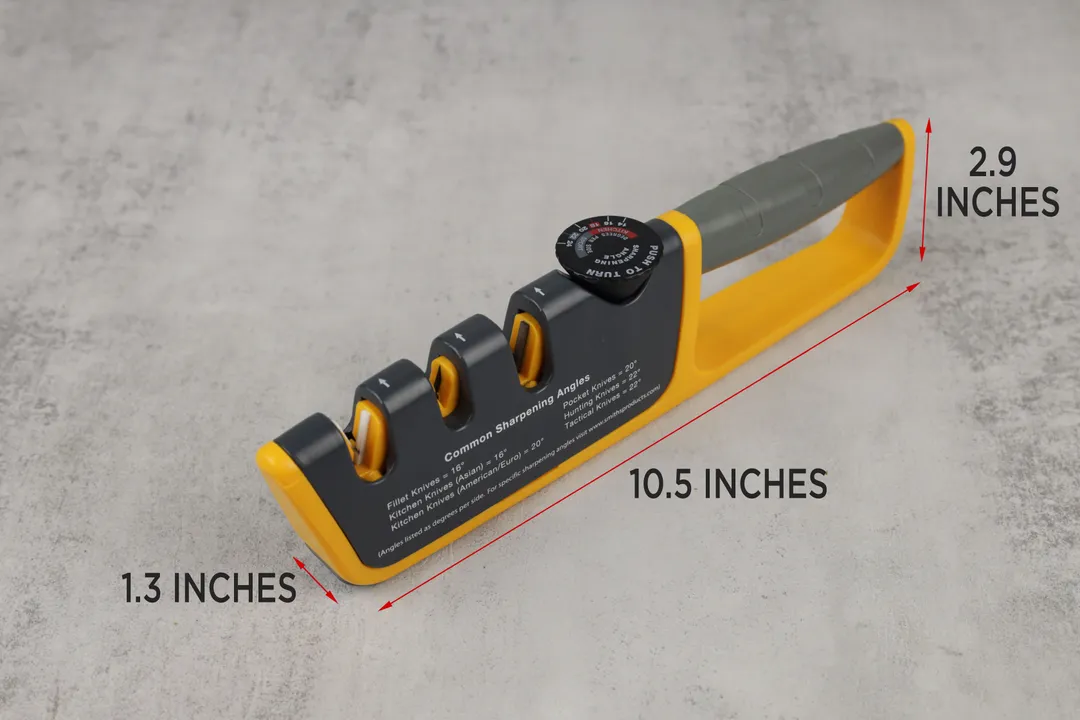
8.2 Build Quality
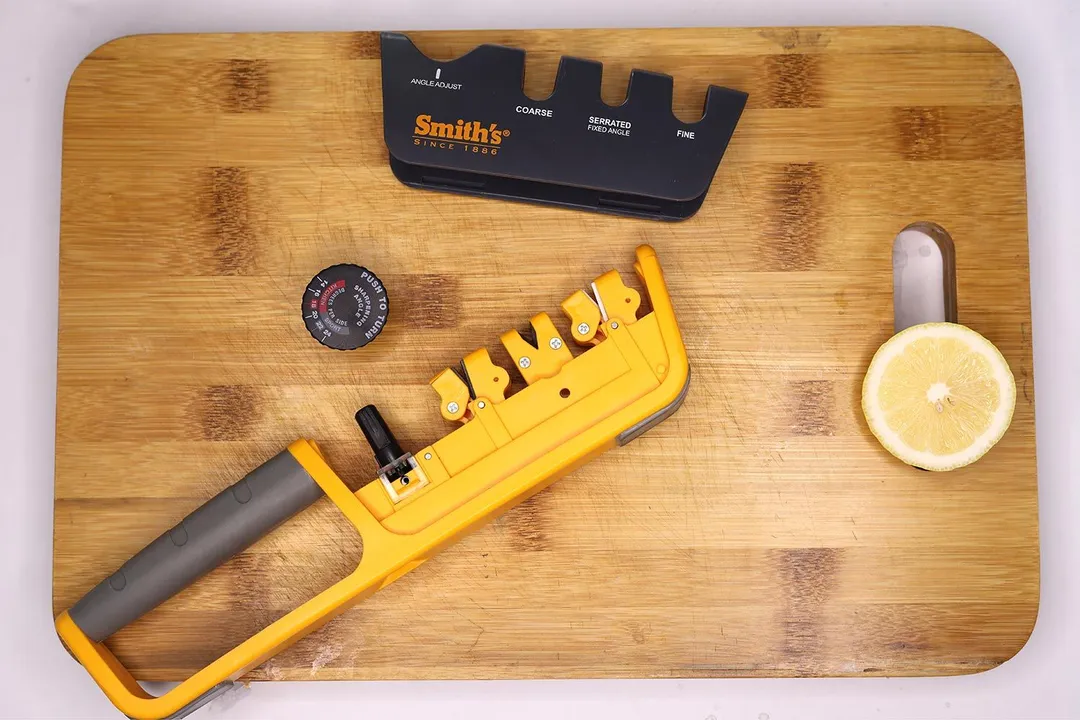
We could tell that the materials that make the Smith’s Pull-Thru Sharpener are all high-quality, and the finish suggests the manufacturer’s dedication to every small detail.
However, its angle adjustability is accommodated by a bunch of movable and removable parts. Even though they’re secured with screws, the device feels shoddy as a whole. Its angle nob and the working section threaten to fall out or break at the first drop.
6.5 Grip
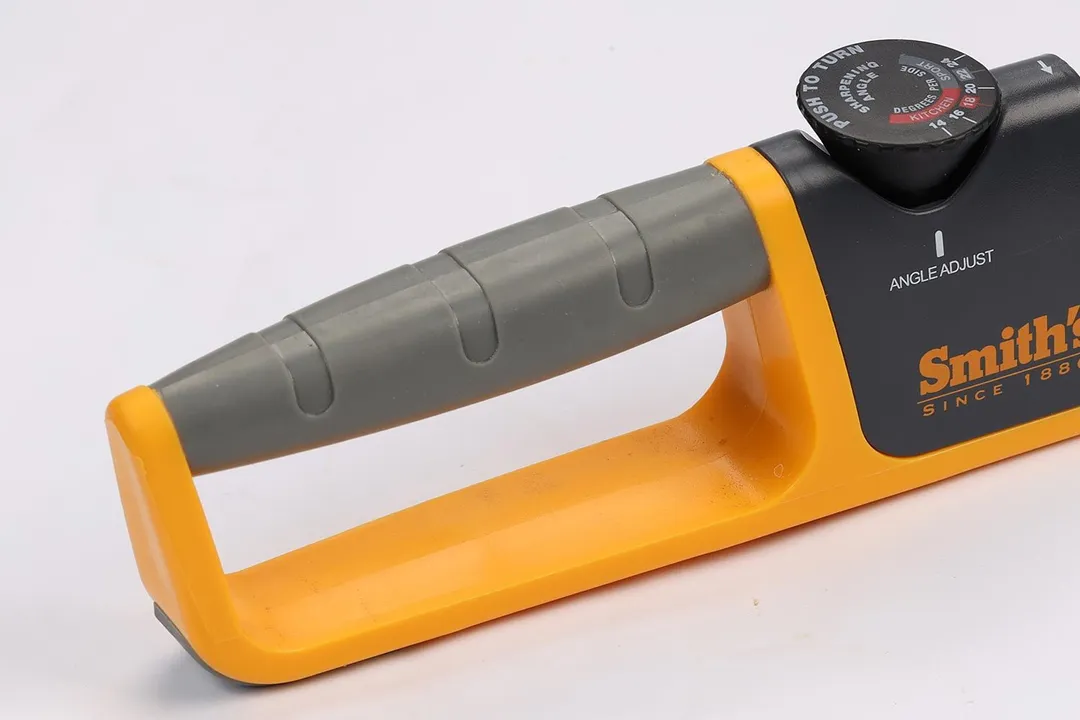
The handle is covered with silicone and has grooves, which makes it grippy. However, in proportion, it’s rather small compared to the whole device . It’s connected to the base, which is good, but part of the base underneath it is flimsy and narrow. This means you will need a strong grip to keep this device stable during sharpening, as confirmed by the stability tests.
Working Section



The Smith’s Pull-Thru may look like a typical tri-stage sharpener, but it’s actually a dual-stage model with an extra sharpening slot for serrated blades.
The abrasive system features precision-ground carbide and ceramic stones. They’re tough, durable, and can certainly get the job done. While the abrasives look similar to those on the Zwilling Henckels sharpener, these seem to be tougher and are not showing signs of chips after sharpening multiple knives.
Except for the serrated slot, which remains fixed at 22.5° per side, the Smith’s sharpening slots are adjustable by 2° increments from 14° to 24°, allowing it to accommodate a wide variety of knives. It’s intended as a fix-all solution for busy cooks who have little time and patience to alternate between different tools.
The device is also one of the very few that allow replacement of the abrasives. You can purchase and change them at home with tiny Philips screwdrivers. If you forget to note the knob's angle while dismantling the parts, the equipment is so designed that you won't be able to lock it into place until you locate the right spot.
Base
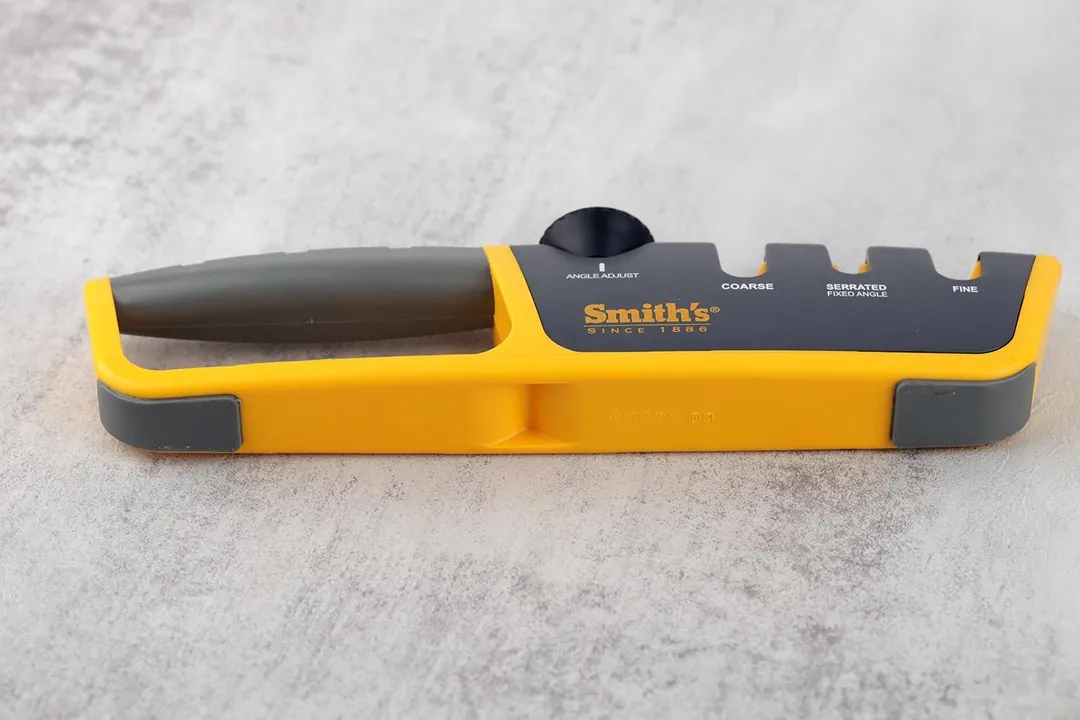

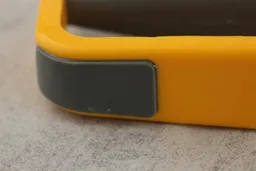
The underneath of this sharpener features two rubber soles on both ends.
Do you notice anything missing in between the sharpener’s underside and the flat surface area? With a high center of gravity and a narrow body supported on two tiny soles, it is not surprising that the whole thing feels wobbly with each draw.
7.5 Ease of Use
On the whole, the Smith’s Pull-Thru was one of the most versatile and convenient handheld sharpeners we’d experimented with so far. However, it was due to two major flaws that some points were docked away: the odd sharpening order and the feeling of unsteadiness.
7.0 Slot Arrangement
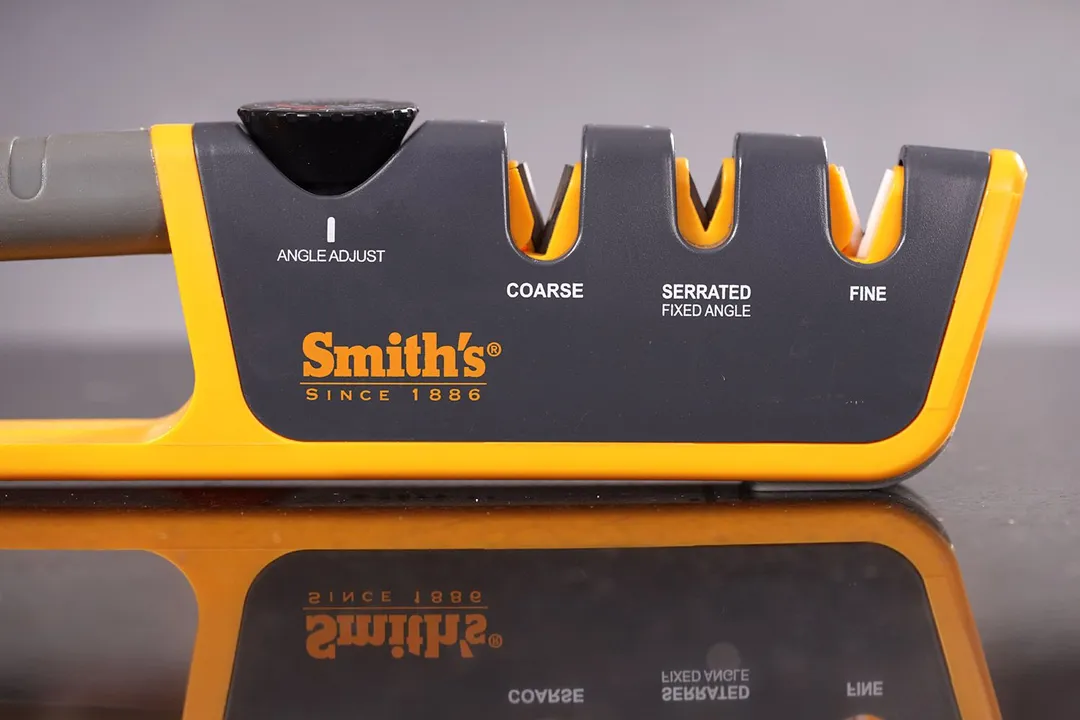
The slots on this device are arranged based on a combination of grit level and designated knife type. Instead of medium coarseness in the center, the middle slot is reserved for serrated blades. Even though the sharpening order does progress rightward, it feels disrupted and unnatural.
With only one correct direction to draw the knife, we followed the arrows adjacent to the slots. These handy little cues indicate where to position the blade and which way to go, preventing cooks from making mistakes. It’s not ideal for lefties, though; so if you happen to be a southpaw, you need to choose another tool.
10 Insertion

During the course of our experiment, we found no discernible difficulty when placing the knives into the slots.
The inserts are wide open on top to comfortably accommodate the knife, while the slots gradually taper downward. Depending on the type of knife you’re working on, you can further tighten or loosen the abrasive blades.
7.5 Pulling Through

The abrasives themselves are hard and well-built; however, because the angle is made adjustable, their frames are not sturdy. As a result, they jostled and squeaked when we tried pressing the knife down during sharpening. This resulted in the excessive loss of metal and a very poor, wavy edge. However, the jostling improved when we reduced the force, so the trick here is to be extra gentle and use just a little more than the knife’s own weight when sharpening.
At times, the knife’s tip scratched into parts of the sharpener, usually the front end facing toward you. This could be annoying but doesn’t really affect the knife edge.
7.0 Stability on Clean Surface
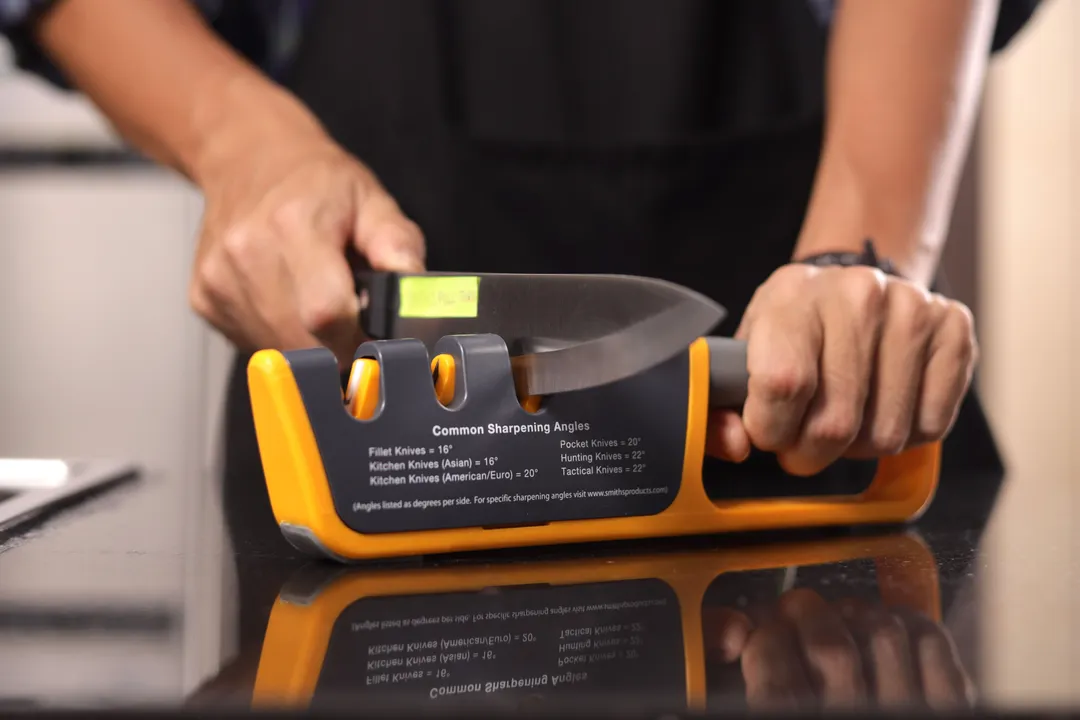
Even when positioned on a spotless surface, knife sharpeners with such an elevated body are quite unstable due to their high center of gravity. The Smith’s Pull-Thru is no different.
The friction at the bottom was strong enough to prevent the unit from flying off the countertop, but the more serious issue was the back and forth rocking motions. With its small footprint and slim body, the sharpener shook and wriggled with every draw. Sharpening at times felt unsafe and uncomfortable.
6.0 Stability on a Wet and Dirty Surface

If the dry surface test served as any indicator, it shouldn’t be a surprise that the sharpener didn’t fare so well on the oil-stained and salt-sprinkled surface. It kept inching itself away from where we set it down. The friction at the sharpening slots didn’t help, either.
To be fair, most other devices struggle in this test. But the Smith’s Pull-Thru was among the bottom tier of the bracket.
Behind the review
Anh Ngo is a writer with 9 years experience at different media outlets, covering from public news and events to product testing and analysis. At HealthyKitchen101, she works across different departments, communicating closely with its network of writers, editors, and health, tech, and search engine experts to provide a meaningful and pleasant reading experience for visitors.
Lap is Head of the Research, Testing, and Review Team (RTR Team) at HealthyKitchen101.com, where he directs and supervises the testing of kitchen gadgets and appliances.
Nguyen Ntk is a graphic designer, photographer, and videographer whose philosophy centers around respecting and celebrating the beauty of reality. Through his lenses, Nguyen strives to capture the true essence of objects and events, showcasing and highlighting authentic features without distortion or exaggeration.


